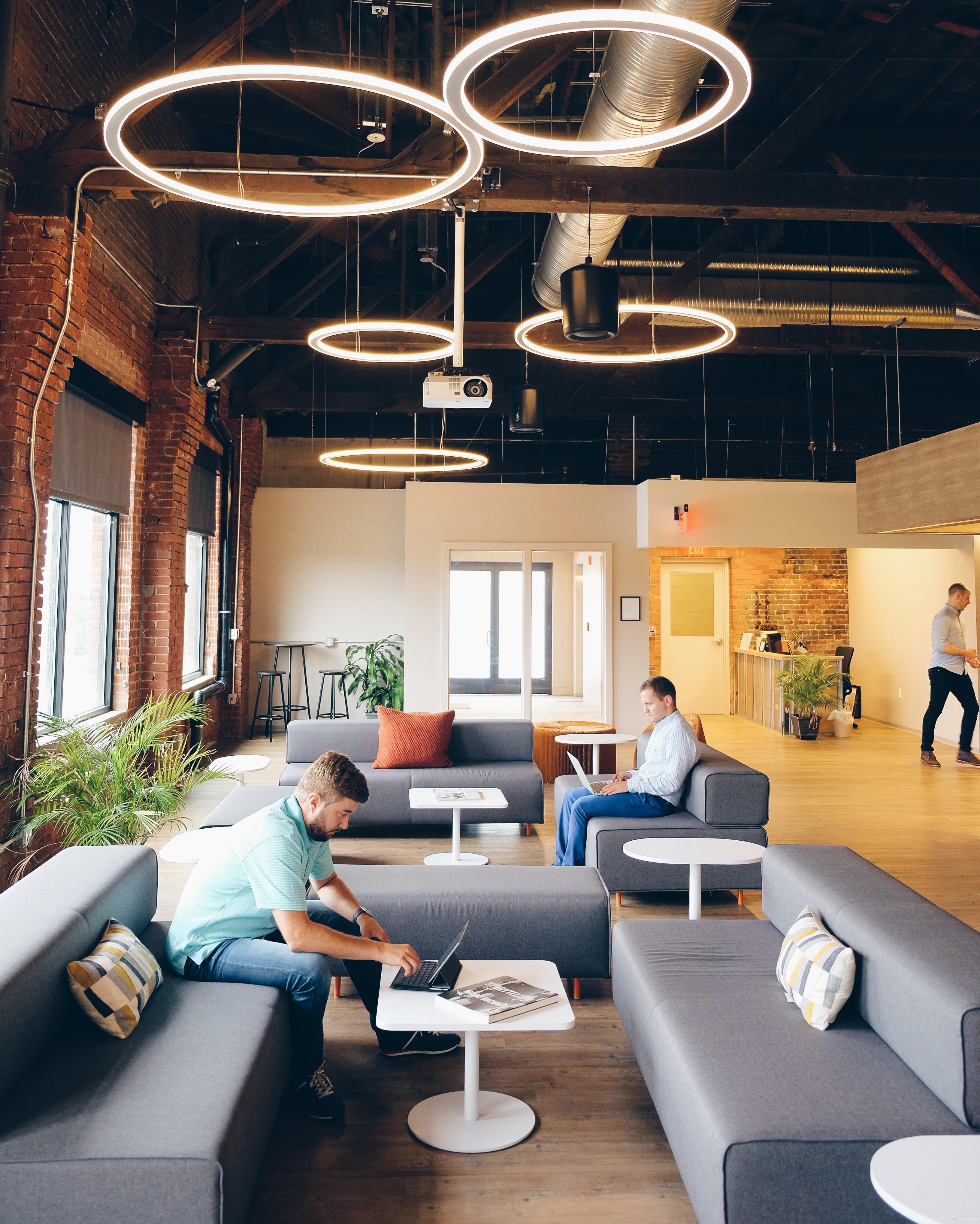
A Wealth of Predictions
As the new, post-pandemic normal simply becomes the norm, planning for the future has become the hot topic for workplace leaders of organizations both large and small. It is with this in mind that we’ve predicated our 2022 predictions on the ideas of the Scottish Enlightenment thinker Adam Smith.
The future of work has arrived. Here’s how to make it work for you.
A Wealth of Predictions
5 Ways Adam Smith’s Invisible Hand Will Guide the Future of Work
Adam Smith is known as the father of modern economics. Most people think of the 18th century philosopher and economist as a foundational free-marketeer, and his invisible hand metaphor, as the iconic representation of how free markets work, and why they often work better.
What would an author who died in 1790 have to say about the hybrid work phenomena as we race forward into 2022?
He might observe that as a global health crisis set in motion a giant work-from-home experiment that no one saw coming, the visible hand of traditional office orthodoxy was forced to release its grip, resulting in a shift to greater workplace choice that promises to yield widespread economic and social benefits not only in 2022 and beyond.
Smith’s invisible hand metaphor is often used to illustrate the unseen forces that shape the free market economy. It supports the laissez-faire theory of economics, which holds that better outcomes occur, society’s best interests are achieved, when self-interest and freedom of production and consumption – the invisible hand – are permitted to drive the flow of trade.
“It is not from the benevolence of the butcher, the brewer, or the baker, that we can expect our dinner, but from their regard to their own interest,” Smith famously wrote.
Smith was a complex thinker, but his ideas on “hands off” laissez-faire market practices inform the future of work in a straightforward way. As workers continue to press their advantage / mobilize / advocate for more freedom at work, as companies continue to invest in happier workers (and realize the higher rate of return on those investments), the employer/employee power dynamic is finding a new equilibrium naturally, with consequences whose benefits are likely even greater than the sum of their parts.
That’s not a prediction, it’s a fact.
Now, let’s get to those predictions:
1) The rubber band snaps – the visible hand releases its grip
Smith’s theories posit that regulated economies place a stranglehold over markets. Who’s played the heavy-handed role of regulator in the office economy since the advent of the cubicle, the commute, and the eight-hour workday? Management, effectively. Conventional thinking, more broadly. The notion that productive work can only happen under the watchful eye of management and that culture can only be fostered in a consolidated office location. There was tension in the system prior to the pandemic, and the experience of COVID-19 has only intensified the strain. The Great Resignation is an example of this strain, and a prominent one, with more workers choosing health and wellness / quality of life over the daily grind. The trend will only accelerate in 2022. The rubber band will snap once and for all.
2) Who’s in charge here?
As the rubber band snaps, as the visible hand releases its grip, the traditional office model won’t be going away. The coming months will simply throw into sharper relief the fact that the balance of power has shifted. Businesses and real estate providers now serve at the pleasure of their employees, they’re in the business of delivering employee happiness. For organizations of all sizes, prioritizing worker needs will be paramount and topping that essential list – the freedom and choice to work from where it works for them. The good news is, companies that adapt and “let go” will discover what the early data is already bearing out – that happier workers are more loyal, more productive, and more energized.
3) Economic efficiency
Here’s more good news for the C-suite. As Smith’s invisible hand ramps up pressure to rethink workplace culture, the way we “office” will have to work differently. One example relates to the industry’s pricing system. Fixed pricing is out, dynamic pricing and zero waste are in. Office space will no longer be priced solely on fixed ten-, fifteen- or twenty-year lease terms. It will be fluid, à la ride sharing or vacation rentals, with companies paying for what they need, when they need it, and not a penny more. They’ll pay prices that take into account competitor pricing, supply and demand and other market-related factors. Less real estate waste and the competitive / cost advantages it yields stands to be a big win for organizations large and small in 2022.
4) A giant leap toward a smaller footprint
Smith never meant to imply that self-interest was the only driving force of human behavior. Collective responsibility is alive and well and is one of the reasons ESG initiatives are on the rise in corporate boardrooms across America. Net-zero carbon emissions by any year is a lofty goal, but a people-centered approach to workplace culture can help lead the charge to getting there. It’s bigger than a new lighting system, it means fewer office buildings, shorter commutes, less air travel. All of this won’t occur overnight, or in the coming year, but awareness of the fact that buildings account for about 40% of all U.S. energy consumption and the realization that rethinking how we office can have enormous implications for the planet will calcify in 2022.
5) There will be winners and losers
Because, well, there are always winners and losers in a free market economy. The winners will be the organizations that adapt; whether it’s large corporations implementing real workplace choice for their employees or real estate operators embracing the realities of flexible space and dynamic pricing, the ones that “let go” and seize the dawn will be set up to thrive. Conversely, organizations clinging to the old model, whose strategy is waiting it out, will start to see the real costs associated with employee burnout and attrition. And, sadly, there will be real casualties related to the new era of work in 2022.
Finally: How about a new 2030 prediction?
Despite the hazards of making predictions, especially about the future, as the famous saying goes, I’ve twice dared to rock the boat by prophesying about the office industry. On stage at Corenet in 2014 my prediction that “50% of office transactions would be executed online by 2020” was met mostly with yawns. And then, in 2017, on a TEDx stage,, my assertion that we would soon reach a point of “peak office” was similarly dismissed. On reflection, I think we got these both mostly right. The office industry was more aflutter still in 2019 when JLL predicted that 30% of office inventory would be flexible by 2030. Every coworking advocate cheered this bold outlook even as most office traditionalists rolled their eyes. JLL got it dead right. Aided by powerful Covid tailwinds, their bold prediction may be realized even sooner than that. I think JLL’s 2030 take has been buttressed by a critical new dimension: The future-proof workplace has a new master - the employee. Management has an inconvenient new problem – how “to office.” True workplace choice, the solution to that problem, in true invisible hand fashion, can (and will) satisfy three needs simultaneously – the worker’s need for greater mobility and freedom, the organization’s need for a productive and loyal workforce, and the planet’s need for a significant reduction in carbon pollution.
And you, oh fearless and enlightened workplace leader, inspired by a certain Scottish Enlightenment thinker, on the right side of history, can help make it all happen.
Ready to hit the ground running? Learn how LiquidSpace Enterprise can help you deploy a hybrid solution tailored to your unique workplace objectives.
Ready to continue your journey?
There are two great ways to do it.
Ready to continue your journey?
There are two great ways to do it.






